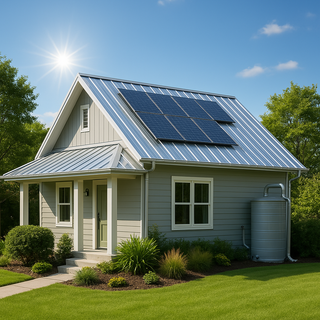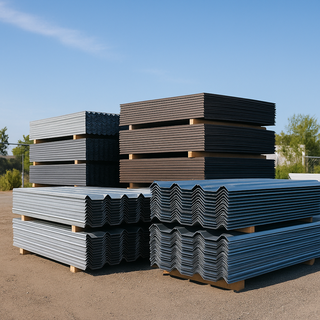When considering roofing options for a home, environmental impact is an increasingly important factor for many homeowners. Metal roofing stands out not only for its durability and aesthetic appeal but also for its significant environmental benefits. This comprehensive guide explores how choosing a metal roof can contribute positively to environmental conservation efforts and provide sustainable solutions for homeowners.
Energy Efficiency
1. Reflectivity Metal roofs reflect solar radiation, which can significantly reduce cooling costs in the summer. This reflectivity helps decrease the amount of energy needed to maintain comfortable temperatures inside a home, reducing reliance on air conditioning and thereby lowering energy consumption.
2. Insulation During the colder months, metal roofs work effectively to insulate a home. They can be installed over an existing roof, which adds an extra layer of insulation, further helping to reduce heating costs.
Sustainability
1. Longevity One of the most significant environmental benefits of metal roofing is its longevity. A metal roof can last 40 to 70 years or more, far exceeding the lifespan of traditional asphalt shingles, which often require replacement every 15 to 20 years. This durability means less frequent roof replacements, reducing waste and the demand for raw materials.
2. Recyclability At the end of its life, a metal roof is 100% recyclable. Most metal roofing materials are also made from a significant percentage of recycled content, sometimes as high as 95%. Choosing metal roofing helps support the circular economy, minimizing waste and the use of virgin resources.
Reduced Carbon Footprint
1. Production The production of metal roofing materials is generally more energy-efficient than that of asphalt shingles, which are petroleum-based and contribute to higher CO2 emissions. The lower carbon footprint of metal production, combined with the energy savings provided by the installed roof, contributes to a significantly reduced overall environmental impact.
2. Transportation Due to their lightweight nature, metal roofs are cheaper and less energy-intensive to transport compared to heavier roofing materials like concrete or clay tiles. This further reduces the carbon emissions associated with their distribution and installation.
Mitigation of Urban Heat Islands
Metal roofs can also help mitigate the urban heat island effect, a condition in which urban areas become significantly warmer than their rural surroundings. The high reflectivity of metal roofs reduces heat absorption, lessening the heat radiated back into the environment and contributing to cooler surrounding temperatures.
Water Collection
For homes looking to implement sustainable practices, metal roofs are ideal for rainwater collection systems. Unlike asphalt roofs, which can leach chemicals into the water, metal roofs provide a clean, pristine surface that does not affect the quality of the collected rainwater, making it suitable for reuse in gardening or as grey water for toilets.
Compatibility with Solar Panels
Metal roofs are often the preferred choice for homeowners looking to install solar panels. Their durability ensures that the roof will likely last as long as the solar panels themselves, avoiding the need for re-roofing during the solar panels' lifespan. Additionally, the ease of installing solar mounts on metal roofs without penetrations that could cause leaks is a significant advantage.
Conclusion
Choosing a metal roof offers numerous environmental benefits that contribute to sustainable living practices. From energy efficiency and recyclability to supporting renewable energy solutions like solar panels, metal roofs provide an eco-friendly roofing solution that benefits both the homeowner and the environment. This guide aims to highlight these benefits, encouraging more homeowners to consider metal roofing as a viable, environmentally responsible option for their homes.






